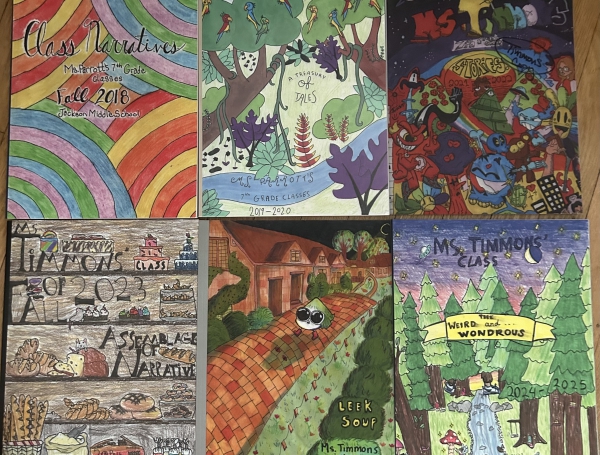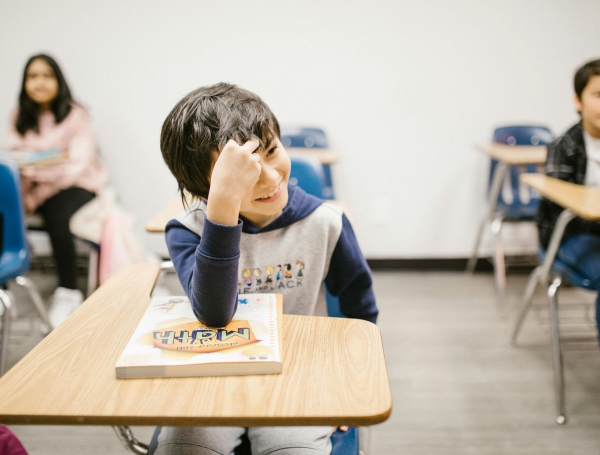

Building Confident Readers
October 23, 2017
“I don’t read.”
As a teacher of social studies and English, I’ve heard this more times than I can remember. Every year, the first time I assign something for my students to read, I can see their faces fall and smiles fade. While some students will take up the task, even unwillingly, there are always a few who push their books and handouts aside and try to lose themselves in their phones. Seeing this in high schoolers can be disheartening--after all, these students should have had ten years to learn to read successfully! It can be especially frustrating to teachers of specialized subjects like social studies or science--courses in which reading is crucial, even if the curriculum leaves little time to teach it.
Over the years, and through a lot of trial and error and many hours of personal education, I’ve found that the biggest barrier to kids feeling like they can read is confidence. Students who are struggling readers know that they are, and even mid-range readers can be intimidated by a reading full of complex vocabulary words, or a set of pages that looks like long blocks of unbroken text. Fortunately, it can be pretty easy to help these anxious students begin to have confidence and move towards being independent readers.
The first thing that I do when confronted with a student who avoids reading is to find ways to build their confidence. I usually try a couple of approaches to figure out what works best for the student:
Read the material aloud.
For students who struggle with reading, hearing something read aloud, and read fluently, can be incredibly helpful for their comprehension. Often, I find that if I re-read a paragraph for a student and then ask them comprehension questions, they do much better than if I have them read it on their own.
Take the paper away.
When I ask students comprehension questions, many of them immediately stare at the paper, waiting for the answer to leap off the page. However, this usually leads to random guessing and prevents students from working to process the material on their own. Instead, I often ask a comprehension question and take their paper away from them, which forces them to answer in their own words.
Provide lots of positive feedback.
If a student is slightly off the mark, I make sure to congratulate them on any part that they got right. Then, after offering positive and specific praise, I’ll direct them to a particular sentence or passage in the paragraph and talk them through why that aspect might be important.
In addition to supporting individual students with reading tasks, I also set up reading tasks in my class so that there are built-in scaffolds and support systems. I do a combination of all of the following:
Break down the reading: I have my students number the paragraphs of any handout I give them, and I require that they summarize the main idea of each paragraph before moving on. This helps students keep track of the information presented in an article and process what they’ve learned. It also keeps them from getting lost in a long or dense article, because it gives them concrete tasks to complete.
Partner read: Unless it’s a test or later on in the year after students have built skills, I require students to read all assignments in pairs, and either read them aloud or at least compare summaries with each other before moving on to a new paragraph. This prevents more reluctant readers from just fading into the background and avoiding the work and has the added benefit of slowing down stronger readers to provide them with a more in-depth knowledge of the subject at hand.
Building confident readers takes time and patience, but with support, all students can read independently and successfully.
Want to learn more about this subject? The Heritage Institute offers the following related professional development courses for Teachers:
Reading Success for All Students
THE WRITING & READING WORKSHOP: Engaging the Adolescent
WRITING WITH KIDS: Real Writing With Real Results
Reading Strategies for All Content Areas
 Article by Alison McCartan, a regular contributor to The Heritage Institute's Blog, What Works: Teaching at Its Best.
Article by Alison McCartan, a regular contributor to The Heritage Institute's Blog, What Works: Teaching at Its Best.
Alison McCartan is a high school teacher in the South Puget Sound region of Washington State. She has taught English and history in high schools across the country, and when she's not orchestrating re-enactments of the Industrial Revolution in class, she can usually be found with a cup of tea, her cat, and a book.




